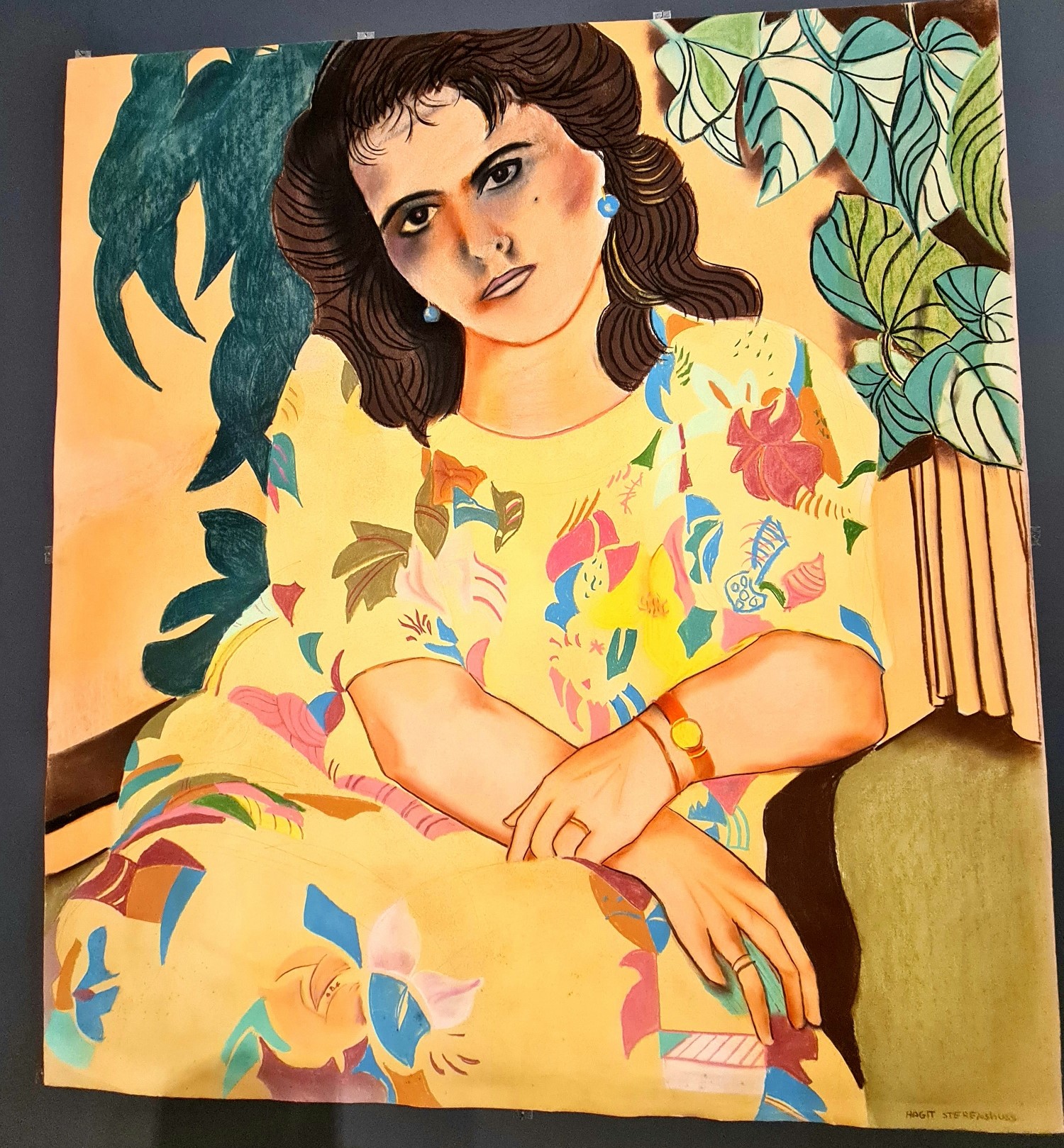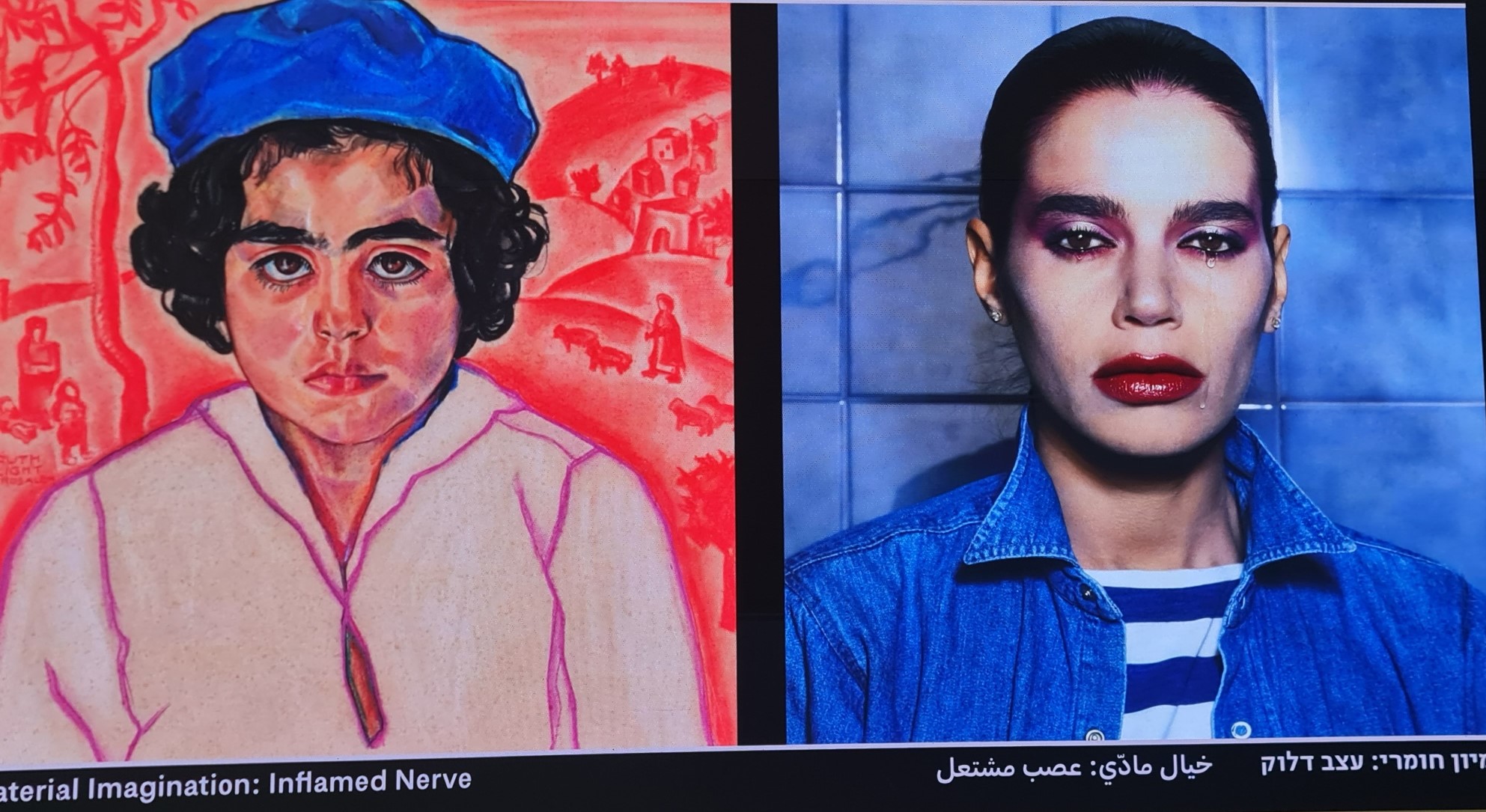
.
Hagit Sterenshuss: Past, Tense
The exhibition Past, Tense presents a selection of portraits by Hagit Sterenshuss, the bulk of
whose work was created in the 1980s and early 1990s. As the only daughter of sculptor,
illustrator, and designer Ruth Zarfati and sculptor and painter Moshe Sternschuss, two
prominent artists in 1950s Israel, her artistic language carries overtones of her childhood
home alongside the desire to find an independent voice. The large-scale figurative portraits,
which have become her hallmark, were mostly painted during her sojourn in London and New
York, sensitively addressing moments of loneliness in the big city.
In international art (followed by local art), the 1980s were marked by a "return to painting."
Artistic practice, immediately after the peaks of minimalist and conceptual art, was
characterized by a search for new forms of figurative painting and a return to the body and to
human interaction. A look back at those years reveals a turbulent decade that ushered in the
age of the media. Elements of high and low culture began to blend, undermining the
hierarchies of Western modernism.
As its title suggests, the exhibition Past, Tense takes us on a time travel back to another time
and place, prior to the works' date of making. The figures, whose portraits are rendered in
vivid pastel colors, belong to the artist's immediate circle of friends. Their "natural" place is
the domestic setting, but the internal drama raging in their souls and discernible on their faces
seems to draw the external reality inward, a reality which reeks of sex, drugs, and rock and
roll. Alongside vitality and passion, it is also imbued with desistance and death, against the
backdrop of the outbreak of AIDS.
The titles of the paintings, like the names and locations of the depicted subjects, bring a small
community of strangers together, young and far from home. Their figures are sometimes
cropped by the boundaries of the format, ostensibly attesting to unframeable voluminosity and
expansion. The source of the images and the inspiration for the fragmentation of the "partial"
figures originate in Polaroid snapshots taken by Sterenshuss. The photographic echoes further
widen the gap between the momentary, rapid occurrence and the lingering and immersion
demanded by the works.
Sterenshuss's work reveals an artistic channel which was far from central in the
historiography of Israeli art. It indicates a turning away from national narratives and the
definition of the local versus the universal, and a preference for vulnerable existence,
crumbling like pastel chalk. In 1994, Sterenshuss turned to Hinduism. She continues to create
and teach art but has refrained from exhibiting her work until now.
..
Material Imagination: Inflamed Nerve
Israeli Art from the Museum’s Collection
Inflamed Nerve, the third chapter of the Tel Aviv Museum Israeli art collection exhibition Material Imagination, is launched during the deepest rift that Israeli society has ever seen. The social, ideological, and religious polarization pounds in the exhibition like the throbbing pulse of the artworks and their evolving interrelations.
After three years of display, the exhibition, which features works created here over more than a century, has been supplemented by some seventy new works by leading artists, some well-known, others making their debut. The space dedicated to the poetics of fire, Blazing Movement, is charged—as before, and to an even greater extent—with a call for action, cementing our place in the East; floating in the Airship space are various manifestations of the disintegration of the private and public body; while the space of Promised Land seethes with a sense of detachment, exile, and nomadism.
The exhibition Material Imagination departs from the story of Israeli art as a chronological narrative running parallel to the national story. Material Imagination is a model of thinking conceived by philosopher Gaston Bachelard during years of delving into the four elements—earth, air, water, and fire—and their incarnations in the imagination and in art. The material imagination thrives in the dialogue between the materials of the world and archaic images—archetypes accumulated and etched in human consciousness. The model formulated by Bachelard is the organizing principle underpinning the current collection exhibition. The three galleries of Israeli art unfold three chapters: Promised Land, Airship, and Blazing Movement.
Each chapter examines the works through a host of associations arising from the artworks' materials or elemental images. This distinction returns the gaze to the materiality of the artwork as an act and an object, requiring an attentive gaze, free of preconceptions regarding the art created here from the beginning of the previous century to the present day.
Curator: Dalit Matatyahu
Associate curators: Tal Broitman
Assistant Curators: Kfir Meir, Adi Gross, Amit Shemma
www.tamuseum.org.il/en/exhibition/material-imagination-inflamed-nerve-israeli-art-from-the-museums-collection/
Photos by Silvia G. Golan
More Pics at Facebook Diplomacy Israel , Israel Diplo and Silvia G Golan










